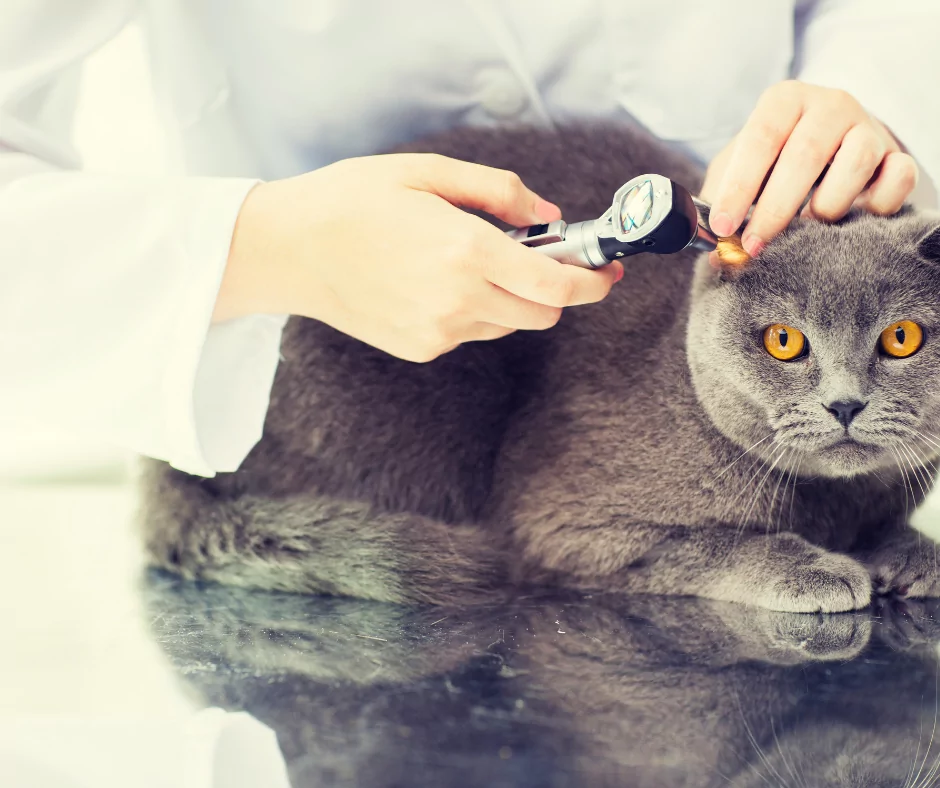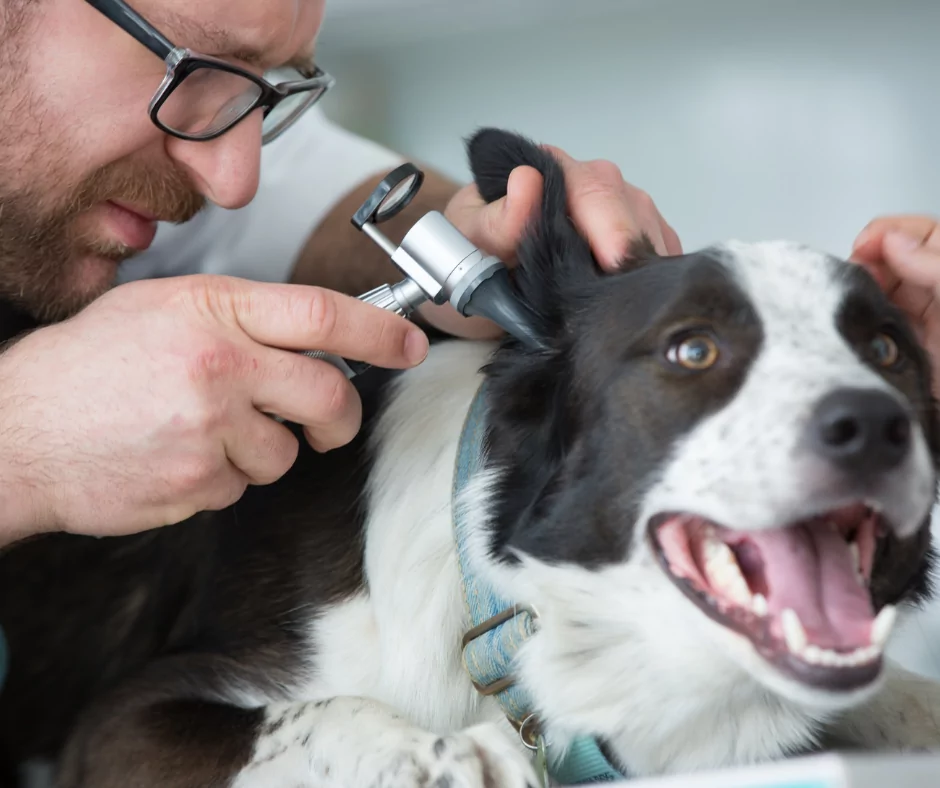Are you a beginner in the veterinary field? Have you wondered about effective otoscope use? Or what is an otoscope?
Every day in the veterinary clinic we see dogs (and cats) that have some form of ear infection. Scratching, head tilting, painful ears, bad odor are some of the signs that there might be an issue with your dog’s ears. These are the reasons we perform otoscopy in dogs.
There can be many factors that can lead to ear problems such as genetic predispositions (narrow ear canal, floppy ears, etc.), activities (fun day at the park in the tall grass), or other environmental factors (parasites).

The Purpose of an Otoscope
Every ear exam starts with a visual examination of the outer parts of the dog’s ear. Then we proceed to examine the ear canal with an otoscope. The otoscope can be a manual tool that has a speculum at one end and a magnifying glass and a light on the other.
The otoscope lets us see the inside of the dog’s ear. There is also a video otoscope, with a built-in camera at the end for easier examination and visualization of the ear’s insides. Various tools can be added to an otoscope depending on each case. Aspiration needles, scrapers, brushes, etc.
When performing an ear exam, if the ear canal is swollen and the otoscope can’t go in, the dog needs to get anti-inflammatory therapy first. Otherwise, the whole examination can be very painful and traumatic for the patient.
Many times, especially in late summer, dog owners take their dogs to the vet, thinking that the dog is complaining of an earache. This is due to the dog tilting its head and scratching profusely. During this time of the year, the culprits of ear pain can be foxtails.
These are small bits of grass that manage to get inside the canine’s ear and travels only one w–deep inside! When performing an otoscopy, the veterinarian gets a visual of the foxtail and is then able to pull it out.

The Anatomy of The Animal Ear
There’s a lot more to an animals’ ear than you probably know! In fact, the ear is surprisingly complex, and it has some remarkable abilities. Here are a few facts about the anatomy of an animal ear:
- The outer layer of skin on our ears (the auricle) is made up of very thin hairless skin known as “pellucida.
- The hairless skin is composed of two layers: a bottom layer called the epithelium, and an upper layer called the dermis. The epithelium lines the inner surfaces of all the internal organs and protects them from the outside world. The dermis is attached to the skin on the outside of an animal’s body.
- The bones that compose the ear are the auricle (ear-shaped cartilage), the malleus (hammerhead-shaped cartilage), and the incus (cylinder-shaped bone). These bones are located on the side of an animal’s head.
- Surrounding the malleus is a small bony bowl called “involucrum” which protects the inner ear from damage.
- The inner ear contains the cochlea, three fluid-filled tubes that conduct sound waves into the fluid-filled parts of the inner ear. The middle of the cochlea is called the “scala vestibuli.”
- The actual organ of hearing is a small bone on top of your head called the “stapes.” This bony plate is attached to one side of your inner ear (scala media). The stapes vibrate in response to sound waves that move through them.
How To Use an Otoscope
In the video below, you can see an example of how to use an otoscope and about the anatomy of the ear.
Once you learn how to use an otoscope, you will need to get one for yourself. We prepared a list with our top picks of 7 Otoscopes for Vets you can find on Amazon
